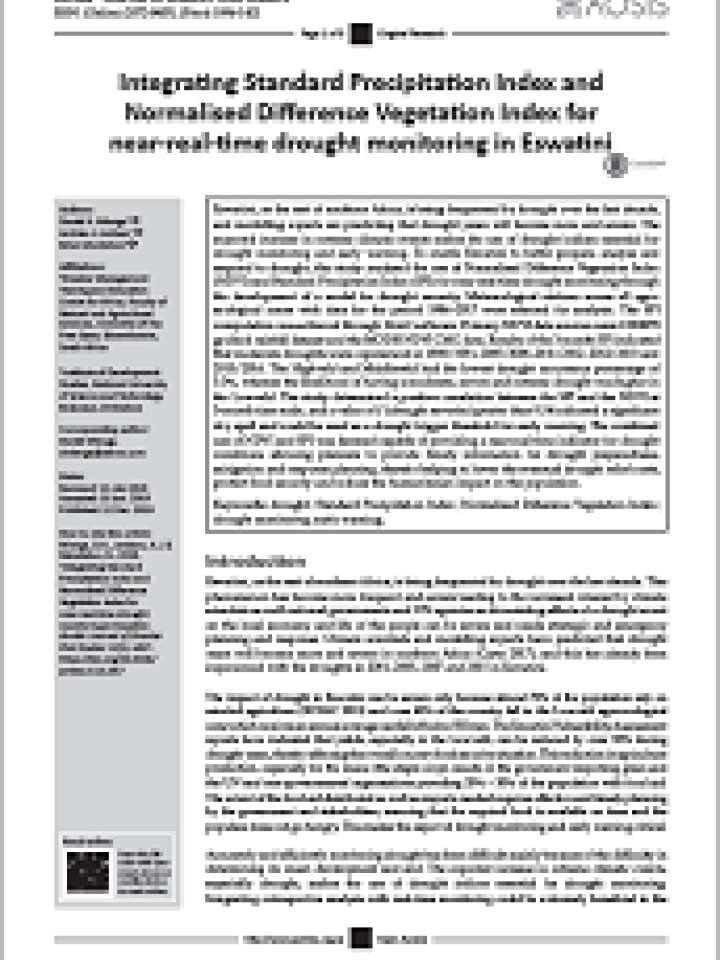Integrating Standard Precipitation Index and Normalised Difference Vegetation Index for near-real-time drought monitoring in Eswatini
Eswatini, as the rest of southern Africa, is being frequented by drought over the last decade, and modelling experts are predicting that drought years will become more and severe. The expected increase in extreme climatic events makes the use of drought indices essential for drought monitoring and early warning. To enable Eswatini to better prepare, analyse and respond to drought, this study analysed the use of Normalised Difference Vegetation Index (NDVI) and Standard Precipitation Index (SPI) for near-real-time drought monitoring through the development of a model for drought severity.
The study determined a positive correlation between the SPI and the NDVI at 3-month time scale, and a value of Y (drought severity) greater than 0.54 indicated a significant dry spell and could be used as a drought trigger threshold for early warning. The combined use of NDVI and SPI was deemed capable of providing a near-real-time indicator for drought conditions allowing planners to provide timely information for drought preparedness, mitigation and response planning, thereby helping to lower the eventual drought relief costs, protect food security and reduce the humanitarian impact on the population.
Explore further

